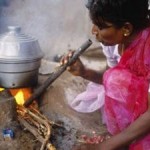 Durban, South Africa – The World Bank on December 6 announced two new financial initiatives – the Carbon Initiative for Development (Ci-Dev) and the third tranche of the BioCarbon Fund (BioCF T3) – to help the least-developed countries access financing for low-carbon investments and enable them to tap into carbon markets after 2012.
Durban, South Africa – The World Bank on December 6 announced two new financial initiatives – the Carbon Initiative for Development (Ci-Dev) and the third tranche of the BioCarbon Fund (BioCF T3) – to help the least-developed countries access financing for low-carbon investments and enable them to tap into carbon markets after 2012.
“The World Bank is helping countries in the further development of carbon markets and other market mechanisms to support acceleration of mitigation efforts, and access to those markets for less developed countries,” said Rachel Kyte, World Bank Vice President for Sustainable Development. “The Bank wants to ensure that its suite of financial instruments, including private sources of capital via carbon markets, is accessible to all country clients so they can invest in their sustainable development. The initiatives launched today [December 6, 2011], focused on agriculture and access to energy, will strengthen links to these markets for the world’s poorest communities to these markets, as well as the flow of financing to action on the ground.”
The new carbon finance instruments will enable client countries to purchase certified emission reductions (commonly called ‘carbon credits’) from a diverse range of projects such as household biogas systems in Nepal, cook stoves in Africa, reforestation in the Democratic Republic of Congo, soil carbon in Kenya, and municipal solid waste in Uganda. These ongoing projects are helping to facilitate and accelerate access to energy in some of the world’s poorest countries.
The Ci-Dev, aiming to raise USD 120 million, is a partnership of donor and recipient countries, where public and private sector entities are pledging their support to capacity building and carbon market development in the poorest countries of the world. The Walloon Region (Belgium) is seeking to pledge 5 million Euros with an immediate 1.2 million Euros by the end of 2011. A number of public and private sector entities, including the Norwegian company Statoil, have expressed interest in the Ci-Dev as buyers of the ensuing carbon credits.
“We are pleased to support these new initiatives which will help the poorest countries gain greater access to global carbon markets. We anticipate that the Ci-Dev, through successful demonstration and piloting, will have a multiplier effect to bring even greater resources to help these countries grow sustainably,” said Walloon Minister of Environment Philippe Henry.
The second initiative, the BioCF T3, will focus on reforestation and agriculture projects that go hand in-hand with co-benefits such as decreased soil erosion and increased land fertility. The expansion of the BioCF will build on seven years of work in these areas. Notably, eight out of nine forestry projects registered in Africa to date have been developed by this World Bank initiative. By focusing on forestry and agriculture, the projects will develop new opportunities in crucial sectors because the farm economy predominates and is the single-largest source of income, jobs, and livelihoods in the poorest countries including in Africa.
“For Ethiopia, sustainable land management, reforestation of degraded lands, improving agriculture yields and access to energy are critical development priorities. The carbon markets have provided capital to help Ethiopia start achieving this. But it’s not enough – we are eager to do many more projects, scale up those we have started and test new approaches to expand the financial resources available to our country, and the expanded BioCarbon Fund will help us do this,” says Dr. Wondwossen Sintayehu, Director, Environmental Law and Policy Division, Environmental Protection Authority, Ethiopia.
Despite current concerns in the carbon market stemming from uncertainty over the future of the Kyoto Protocol, the decision by the World Bank to launch post-2012 carbon initiatives is indicative of the institution’s commitment to support market-based instruments to fight climate change.
The World Bank is trustee of 12 carbon funds and facilities capitalized at $ 2.7 billion. These funds and facilities support some 174 active projects that are expected to reduce emissions of greenhouse gases by the equivalent of an estimated 220 million metric tons of carbon dioxide. Twenty percent of the World Bank’s portfolio of Clean Development Mechanism (CDM) projects is in sub-Saharan Africa, substantially higher than the 2 percent average generally for CDM projects.
Source: The World Bank.













